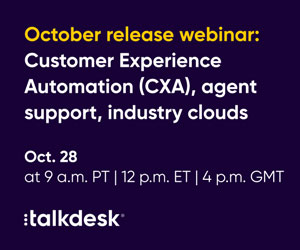Interactions discuss four key aspects that any contact centre should consider when serving young customers.
Millennials are not the generation of the future but we are the generation of the now. With ages ranging from 18 to 35, we are in our prime spending years.
As a millennial myself, I grew up alongside the smartphone, which has had a major impact on my life and the ways in which I interact with my favorite brands.
Traditional means of business-to-consumer communication have changed due to the technology-centric generation that we are.
If companies don’t adjust to meet the needs of their new consumer generation they will quickly fall under the radar.
1. Response Time Is Important to Us
Waiting on the phone for hours is the modern-day equivalent to waiting on a line in a store. If I saw a line that was going to take me two hours I would immediately leave and not waste my time. When we’re waiting on the phone, we don’t know how long we’re in for — but the longer we wait, the more frustrated we get.
As an on-demand generation, we are used to getting responses quickly. When I google something, I expect a field of pages to accumulate in under a second. When I text my friends I get a response within minutes, and when I text my parents I’ll get a response within the hour. We want to communicate with brands just as easily as we communicate with our friends and family.
Depending on the channel I am using, the response time may vary. The phone, text/SMS, chat and similar channels should be like texting a friend, the response is nearly instant – but I won’t be mad if I have to wait a couple of minutes.
With channels like email, responses have a bit more leeway just like when I wait for my parents to respond to me, but shouldn’t be much longer than an hour.
Quick response time shows that you — the brand — care about us — the consumer — and want to handle our issues to keep us happy. In order to ensure the consumers’ demands are constantly met, operating around the clock is necessary.
2. We Want to Be Able to Make Purchases Painlessly
Nobody enjoys spending money, so when it comes to making purchases we want it to be as painless as possible. The way we shop has changed significantly, but our expectations for good customer service remain the same across all channels. Whether we are in the store, shopping online or ordering over the phone, we want to be able to execute a purchase with ease.
No matter the industry, there is always a competitor, so making sure a customer’s journey with your brand is productive, positive, quick and easy is key to creating a loyal customer.
Loyal customers are more likely to recommend your company to a friend or publicize their experience on social media. However, if the purchase experience does not meet those standards you are likely to lose that customer to a competitor and put yourself at risk of being talking about in a negative manner.
3. Pay Attention to Us — On the Platforms We Choose
With smartphones came social media, which has been intertwined with our everyday lives. From sharing funny memes or a picture of your vacation to joining a political movement – what is shared online can vary drastically.
Social media has given our generation a voice that previous generations did not have. It is important to be socially aware of what your customers are saying about you online and to be responsive.
Publicizing what we do is the new norm: if I go out to dinner I will post a snap story of my meal with the location filter. This is basically free advertisement for that restaurant because someone who I have on Snapchat will be more likely eat to there based on my post. This happens more often than you may think; it is an unconscious behavior for those posting and for those being influenced by a post.
We see people check in on Facebook, tag locations in their Instagrams, show logos in their pictures, tweet or post a status about service they had. Our decisions are made socially now; they are no longer just our own thoughts and opinions.
Since nearly everything we do is public, it is important to respond to people when they talk about your brand online, especially the negative comments. By being responsive, you may be able to keep a customer and turn a negative into a positive.
Responding to positive comments is equally important because it builds stronger brand loyalty with the customer. Everyone likes having their voice heard, and reaching out to us on our platforms is the best way to do so.
4. It’s Okay to Be Informal
When we talk to a brand we don’t need such formal responses, so it’s okay to keep conversations more casual, especially on social media or chat platforms. If I keep getting very cut-and-paste responses from a brand it makes me feel like the conversation is impersonal and creates a frustrating experience.
I want to feel like the conversation I am having is personalized to me and the brand actually cares about solving my issues. This creates brand loyalty.
Author: Guest Author
Published On: 5th Jul 2019 - Last modified: 9th Jul 2019
Read more about - Guest Blogs, Interactions




































